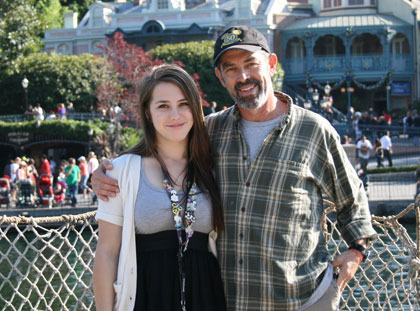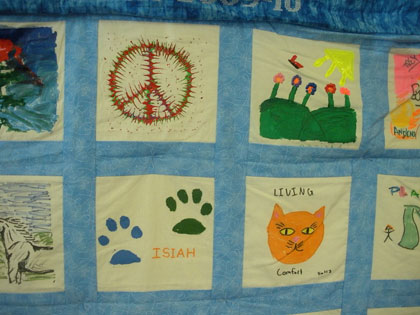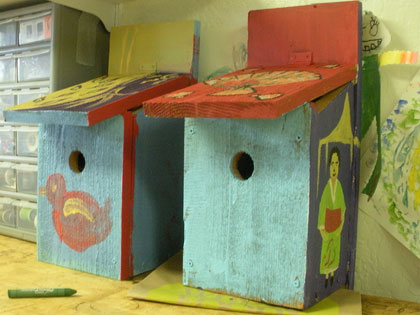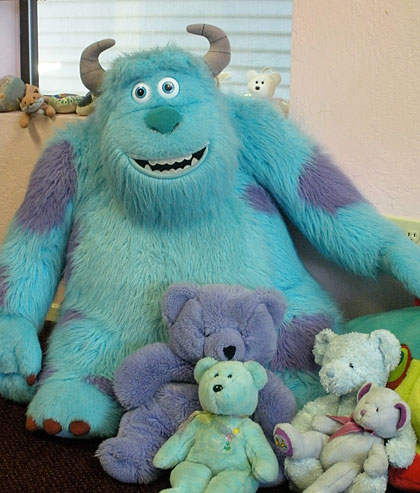Taking it one step at a time
The Willmar Family Grief and Healing Center has a new name, a new look and a new executive director – a shift that took place during the writing of this story. Former Program Director, Barbara Cullen, who goes by the nickname “B,” has taken the reins from Patti Cawood and the organization is poised to launch its annual “Wings of Willmar” capital campaign in a very big way.
The new logo and tagline are evolutionary according to Cullen, as Willmar has seen an across-the-board increase in the need for its services in the past few years. “Willmar is more relevant and necessary than ever,” said Cullen. “Our peer support group, which helps children and teens rebuild their lives after a devastating loss, has increased by 50 percent. And our crisis intervention program in local schools has increased 200 percent. When tragedy strikes, Willmar is here for Sonoma.”
Indeed, Willmar has served more than 800 children in the past two years alone. Whether it’s a traumatic accident that affects the population of an entire school or a devastating illness that hollows a family to its core, Willmar’s outreach and support can make an enormous difference for children and the adults in their lives.
Led by certified counselors and a legion of trained volunteers, children and teens who visit the center learn how to deal with and process the grief they are feeling. Middle and high schoolers attend once-a-week sessions while younger children attend bi-weekly. Regardless of age group, the rituals remain the same starting with a sharing circle complete with talking stick that often draws out even the most reticent of participants and a candle lighting ceremony. From there, children are free to do whatever they choose. Younger kids often play in the “Bop Room,” building structures in which to hide. Many children gravitate toward the musical instruments, the giant piles of stuffed animals or quiet time in the library. One thing popular with everyone – the art room, as evidenced by the incredible scope of artwork that covers almost every flat surface, including the ceiling in some places. A particularly striking display are the “Notes to Loved Ones” that, Cullen says, help participants to memorialize a loved one, re-establish a relationship with them and then to share those feelings with the group.
“We don’t do therapy – we do therapeutic work,” said Cullen, who conversely has a degree in art therapy. “Art is a big part of the healing process and kids who come to Willmar use a myriad of art forms to express themselves and process their feelings.”
One thing both Cawood and Cullen stress, participants are welcome at Willmar for as long as they like. “We recognize that grief is not linear. Sometimes kids come back as they reach developmental milestones like losing a first tooth or going to the prom,” said Cawood. “And often, older kids come back to mentor younger ones which is incredible to see because as peers, they can share experiences and the healing process.”
Board President Bob Nicholas has seen the positive impact the center can have on children and their families. “Willmar is a safe place. Protecting privacy is a priority so children feel free to share their feelings and grief so that, little by little, healing can begin.”
“Kids want a touchstone – a place where they’ll always feel welcome. Willmar is that place,” said Cullen.



Celebrating ten years
Willmar is the only stand-alone grief center specializing in work with children and teens from Portland to Los Angeles. Celebrating its tenth anniversary, the center exists in large part due to the commitment and compassion of those in Sonoma.
At this important milestone and in response to the community’s growing and evolving needs, the Wings of Willmar Campaign has taken flight with an ambitious plan to raise $100,000. So far, the campaign has received 100 percent participation from the board, raising $20,000 in just a few weeks.
It should be noted that Willmar also offers supports groups for adults and is looking to augment support services for the Latino community. “There is often a language barrier for adults and we’re always looking for bilingual volunteers,” said Cullen noting that last year alone there were some 53 program volunteers.








Be First to Comment